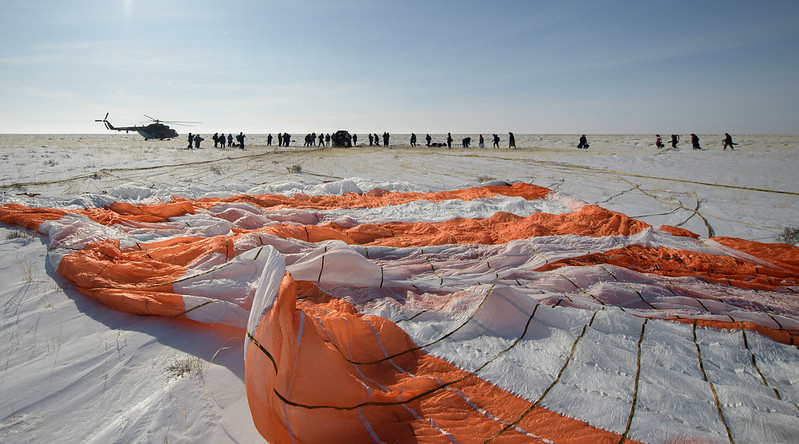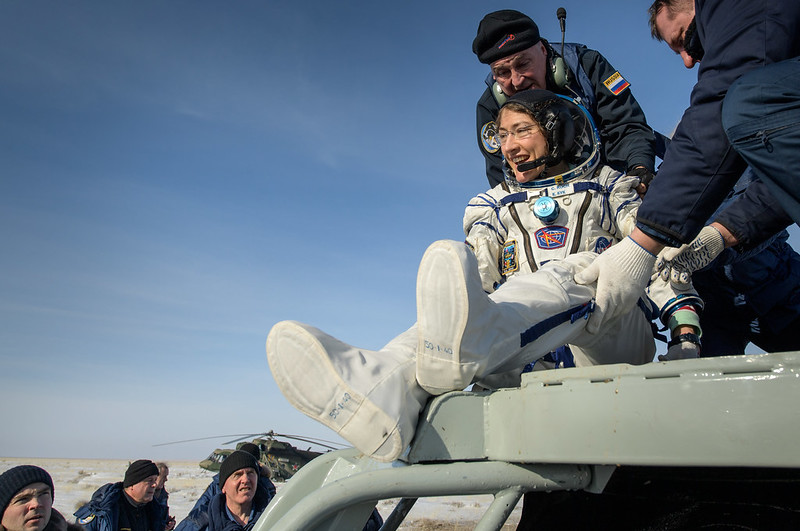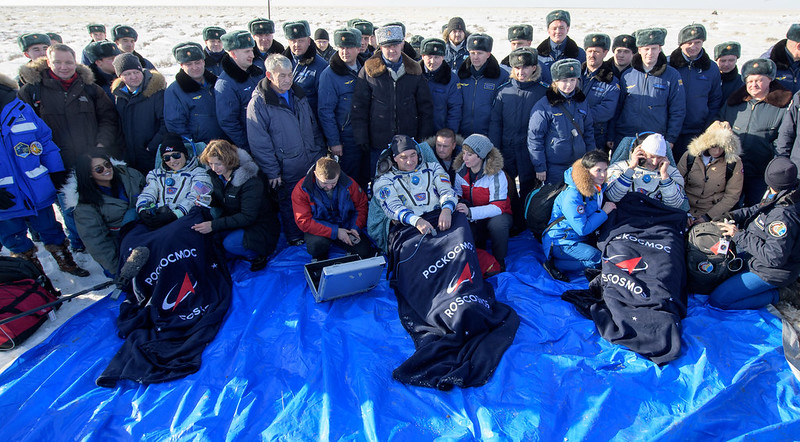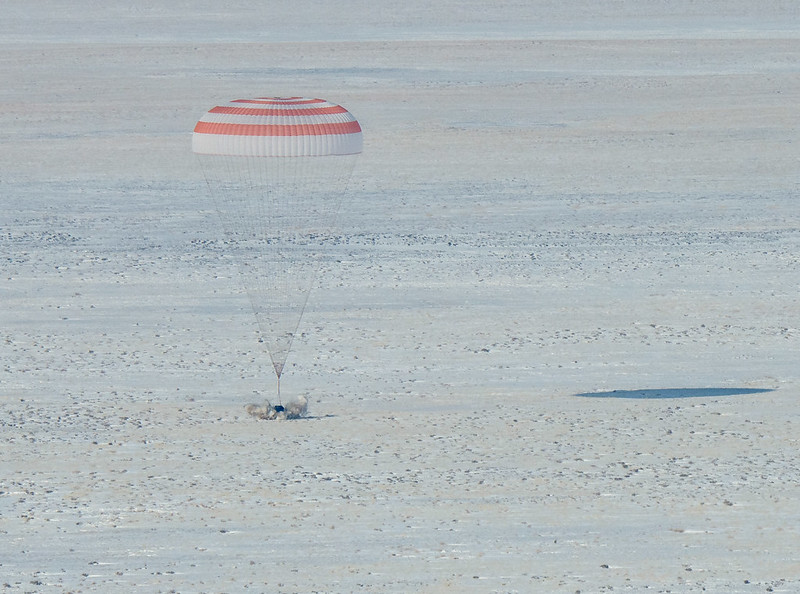A trio of space travelers returned to Earth this morning from the International Space Station, including NASA astronaut Christina Koch, who set a record for the longest single spaceflight by a woman, at 326 straight days. Also coming home was ESA astronaut Luca Parmitano, who has now spent a total of 367 days in space (in two missions), more days than any ESA astronaut in history.
The crew of Expedition 61 also included Russian cosmonaut and Soyuz Commander Alexander Skvortsov, who completed his third mission for a total of 546 days in space, placing him 15th on the all-time time-in-space list.

The crew landed in Kazakhstan in their Russian Soyuz MS-13 capsule at 4:12 a.m. EST (3:12 p.m. local time) southeast of the remote town of Dzhezkazgan, Kazakhstan.
“I’m so overwhelmed and happy right now,” Koch said, just a few minutes after landing.

Koch’s extended mission included six spacewalks, with a record-setting first ever spacewalk involving all women with fellow astronaut Jessica Meir in October, 2019, plus two more all-women spacewalks after that. During Koch’s mission — her first in space — she passed fellow U.S. astronaut Peggy Whitson’s previous cumulative record of 289 days. NASA noted that Koch’s long-duration mission will provide researchers the opportunity to observe the effects long spaceflights on a woman, and can compare it to Scott Kelly’s 340 straight days on the ISS in 2015-2016. These long-duration studies are integral to NASA’s plans to return humans to the Moon under the Artemis program and prepare for human exploration of Mars, NASA says.
Koch launched on her mission on March 14, 2019.
During Parmitano’s time in space, he performed four grueling spacewalks to maintain a cosmic ray detector outside the station, the Alpha Magnetic Spectrometer AMS-02, and in doing so set the European record for longest cumulative spacewalking time. He also remotely operated a rock-collecting rover in the Netherlands, and supported more than 50 European and over 200 international experiments. Parmitano served as the third European and first ever Italian in command of the ISS. Before leaving the space station, Parmitano handed this commanding role to Russian cosmonaut Oleg Skripocha in a traditional change of command ceremony.

During their time in space, the Expedition 61 crew contributed to hundreds of experiments in biology, Earth science, human research, physical sciences and technology development, including testing 3D biological printers to print organ-like tissues in microgravity.
Following post-landing medical checks, the crew will head to their respective countries. Parmitano will board a NASA plane bound for Cologne, Germany. Koch will continue home to Houston. Skvortsov will board a Gagarin Cosmonaut Training Center aircraft to return to his home in Star City, Russia.
Remaining on board the ISS are NASA astronauts Jessica Meir and Andrew Morgan as flight engineers and Oleg Skripochka of Roscosmos as station commander. Morgan also is participating in an extended duration mission, having launched in July 2019 and is scheduled to return to Earth April 17, 2020. The current three-person crew will be joined in early April by NASA astronaut Chris Cassidy and Russian cosmonauts Nikolai Tikhonov and Andrei Babkin, returning the crew to six.

